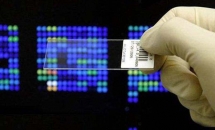It is now 15 years since we made an observation that would revolutionise the natural history of tuberculosis. The observation was a simple one, but it implied some important conceptual and practical changes: granulomatous lesions do not "contain" or "isolate" bacilli; on the contrary, these structures are constant evolving and changing shape. This fact involved their elimination by alveolar macrophages, which began to foam when they accumulated the lipids from the membranes of the necrotic cells they phagoticised. And among these were the non-replicative bacilli that had succeeded in resisting the immune response against them. When they age, foamy macrophages are drained by alveolar spaces, and this draining creates the possibility that new lesions will be constantly generated. This was the origin of the "dynamic hypothesis" which claims that latent tuberculous infection is a consequence of constant endogenous reinfection, and not of non-replicative bacilli being kept enclosed in small old lesions.
This notion gives rise to the idea that infection and reinfection by Mycobacterium tuberculosis cannot be prevented, even with the best immune responses, and that therefore it is impossible to obtain a prophylactic vaccine against TB; at the same time it gave rise to the designing of the RUTI vaccine, the first therapeutic vaccine, which has been created as a complement to treatment with antibiotics.
Recently, our team has made another "anti-conventional" quantum leap in TB research: they have discovered that the development of a controlled granulomatous lesion present in a latent infection into a cavitated lesion is not a result of local immunosupression, in accordance with the theory, but instead it is the consequence of an excessive inflammatory response, and the local accumulation of different lesions. This is made possible in the upper lung by a lesser structural capacity to drain bacilli and by a reduced capacity for immunological control owing to a deficiency in its capillary network. The excessive, synchronised growth of these lesions facilitates their fusion and the inducement of lesions characteristic of tuberculosis.
All of the above has made it possible to reorient TB prevention and treatment policies, including the administering of known anti-inflammatory drugs, and of specific probiotics (such as Nyaditum resae, developed by Manremyc, a spin-off of IGTP) which permit the inducement of a more balanced immune response. The adoption of "out-of-the-box" alternatives, divorced from the dogmatic views, presents a hopeful future for the control of this disease, at a time when the monitoring of the old dogmas is beginning to demonstrate their poor results, as in the case of the recent failure of Oxford University’s MVA85A vaccine.
Cycle: Challenges of the 21St Century the Voice of Medicine, III
Organized by: Residence for Researchers. THEY CALLABORATE:Fundació Clínic Barcelona, IDIBAPS, RESA and Col·legi Oficial de Metges de Barcelona
